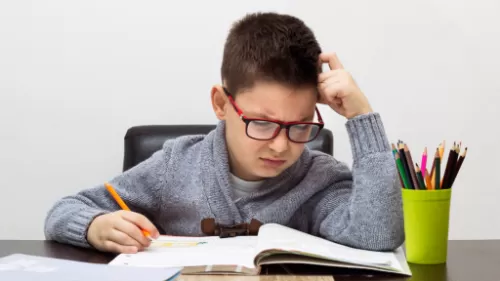Understanding Dyslexia in Special Education: A Guide for Parents and Educators
Dyslexia affects approximately 1 in 5 students in the United States, yet it remains widely misunderstood. Often dismissed as simply “trouble with reading,” dyslexia is actually a specific learning disability that impacts how individuals process written language. In the context of special education, early identification and targeted support are crucial to student success. This article explores how dyslexia is addressed within the special education system, what interventions work, and how families and schools can collaborate to ensure every child has a path to literacy and confidence.
Related searches

What Is Dyslexia? More Than Just Letter Reversals
Dyslexia is a neurological condition that primarily affects reading, spelling, and decoding words. It's not a reflection of intelligence or motivation—many dyslexic students are highly creative and bright. The challenge lies in how their brains interpret language. Common signs include difficulty sounding out words, frequent spelling errors, slow reading speed, and struggles with rhyming. Importantly, dyslexia is not outgrown; it is managed through consistent, research-based instruction. Recognizing these early warning signs can help teachers and parents act quickly, making a huge difference in long-term outcomes.
Special Education Services: How Dyslexia Qualifies for Support
In the U.S., students with dyslexia may qualify for support under the Individuals with Disabilities Education Act (IDEA) or Section 504 of the Rehabilitation Act. Through IDEA, dyslexia falls under the umbrella of “Specific Learning Disabilities” (SLD), which allows students to receive an Individualized Education Program (IEP). This legal document outlines specialized services, goals, and accommodations tailored to the student’s needs. For those who don’t qualify under IDEA, a 504 Plan can still provide classroom adjustments such as extra time on tests or audiobooks. These supports can dramatically reduce barriers to learning.
Effective Instruction: What Really Helps Dyslexic Students Learn
There’s no one-size-fits-all fix for dyslexia, but research consistently supports structured literacy approaches. Programs like Orton-Gillingham, Wilson Reading System, and Barton Reading & Spelling are among the most effective. These methods are explicit, systematic, and multisensory, helping students build phonemic awareness, decoding skills, and reading fluency. Special education teachers trained in these programs work one-on-one or in small groups, reinforcing foundational skills. Early and intensive instruction is key—ideally beginning in K-2—but older students can also make significant progress with the right support.
The Role of Teachers and Schools: Building a Dyslexia-Inclusive Environment
Teachers play a critical role in identifying and supporting dyslexic students. General education teachers are often the first to notice reading struggles, and their collaboration with special educators is vital. Schools should offer regular screenings, professional development on dyslexia, and a tiered intervention system such as Response to Intervention (RTI). Beyond instruction, schools should also foster an inclusive culture that embraces learning differences. Dyslexic students often face anxiety, frustration, or low self-esteem; a supportive classroom climate helps build resilience and self-worth.
Empowering Parents: Advocates, Partners, and Champions
Parents of dyslexic children often become passionate advocates—and with good reason. Navigating evaluations, IEP meetings, and legal rights can be overwhelming, but families are essential partners in the educational process. The first step is knowledge: understanding dyslexia, school obligations, and available interventions. Parents can request a formal evaluation at any time and have the right to participate in all IEP decisions. Organizations like Decoding Dyslexia and the International Dyslexia Association offer tools and community support. Empowered parents can ensure their children receive the instruction and accommodations they deserve.
Supporting Every Dyslexic Learner, Together
Dyslexia is one of the most common learning differences in schools today—and one of the most successfully addressed when identified early and supported effectively. With the right mix of evidence-based instruction, legal protections, teacher collaboration, and family involvement, students with dyslexia can thrive in and beyond the classroom. Special education isn’t about labeling; it’s about unlocking potential. By understanding the unique needs of dyslexic learners, we build not only stronger readers but stronger communities. Every child deserves the chance to read with confidence, and that journey begins with awareness and action.

